
Including Hill Park, Women's Park
and the Confederate Memorial Fountain
46°35'39.29"N
112° 2'26.02"W

1930s
Tinted Postcard of the Algeria Shrine Temple
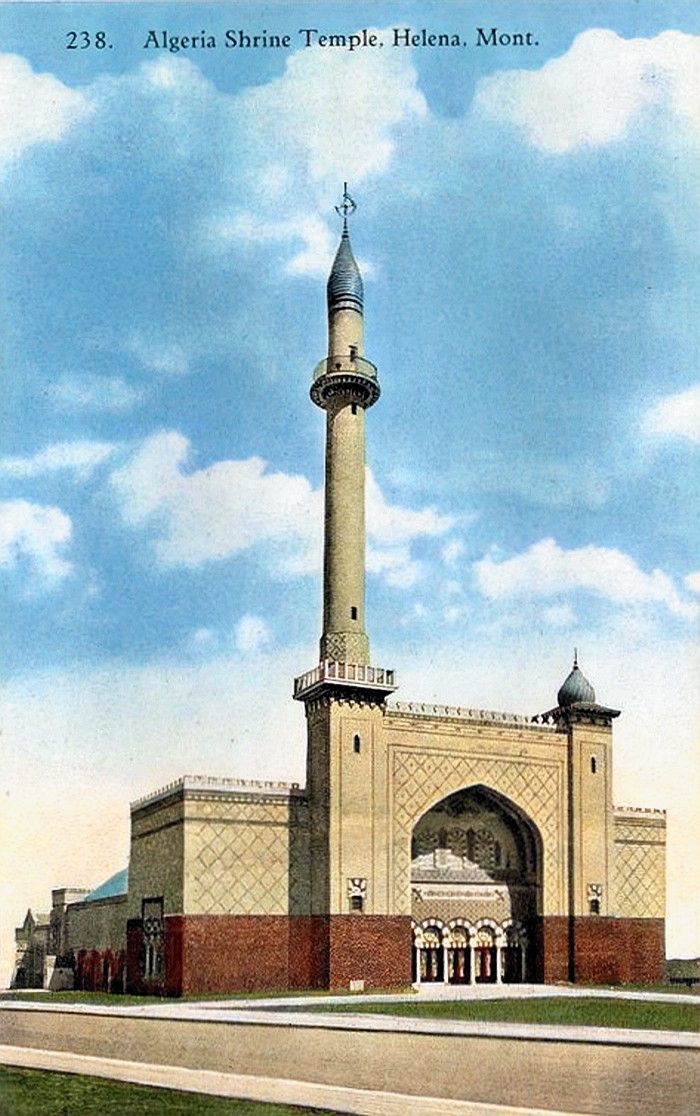
|
Built in
1920-21 as the headquarters of the Algeria
Shrine,
this remarkable Moorish Revival style building, with its towering
minaret, has long been a popular postcard and snapshot subject.
The building
suffered substantial damage in the 1935 earthquakes, and the
City of Helena purchased it from the Shrine shortly thereafter.
It was the home of City offices until 1976, when they were removed
to the renovated 1904 Federal
Building. The police department operated from the Civic
Center for decades, and the fire department still has a staion
there.
For a detailed history of the Civic Center, download the 1987
National
Register of Historic Places nomination form ,
courtesy of the Montana Historical Society's Montana
History Wiki.
|
Algeria Shrine Cornerstone Ceremony
June 19, 1920

COURTESY OF KARLA SHERRY • CLICK ON IMAGE TO ENLARGE IN A NEW WINDOW
The
Algeria Shrine Temple Nearing Completion, 1921
Note scaffolding in front archway

COURTESY OF THE DAVID POOR COLLECTION
Detail
Showing Scaffolding
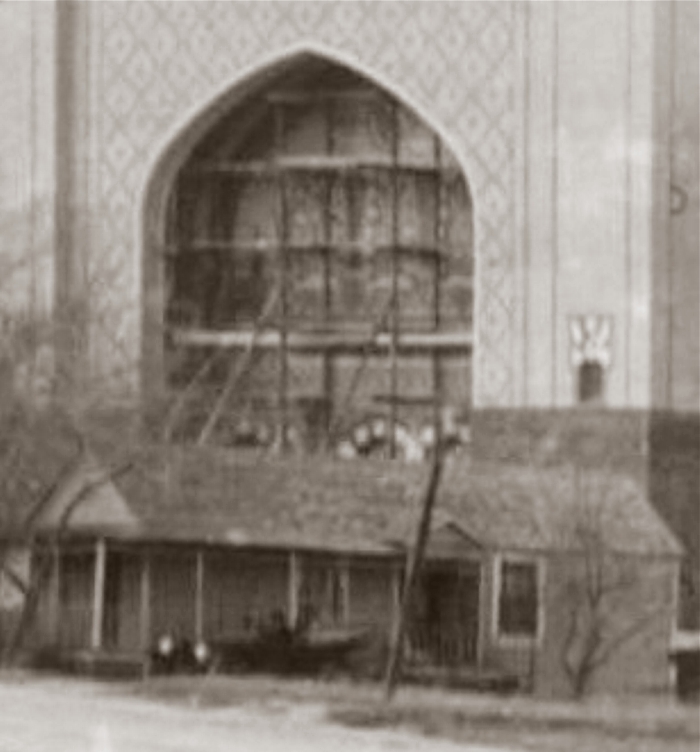
Dedication
Ceremony Souvenir Button

Recent
Satellite Image of the Civic Center Area


Algeria
Shrine Temple from the Federal Building, probably 1924

COLLECTION
OF KENNON BAIRD

Algeria
Shrine Temple and a Corner of Hill Park, 1920s

COURTESY
OF TOM KILMER
Intersection of Benton
Ave. and Neill Ave.

Algeria
Shrine Temple in Winter, 1920s
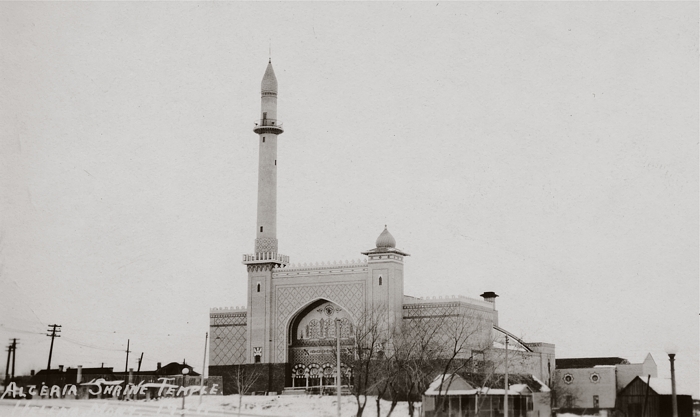
COLLECTION
OF KENNON BAIRD

Algeria
Shrine Temple, 1920s


Algeria
Shine Temple & the Great Northern Depot from Women's Park, 1920s

|
In 1938,
the Helena Chamber of Commerce briefly entertained plans to
build a log cabin history museum on the NE corner of Women's
Park. Helena women's clubs and other concerned women nixed the
location because construction would have changed the original
design of the park, which they felt would have been unfair to
the memory of women instrumental in making the park a possibility,
and would have displaced benches and fountains that had been
placed as memorials.
In May of
1939, a small museum opened in the west end of the Great Northern
Depot.
|

Algeria
Shrine Temple, ca. 1928

COURTESY
OF TOM MULVANEY •
CLICK ON IMAGE FOR A BIG VERSION IN A NEW WINDOW

Algeria
Shrine Band in front of the Temple, 1920s
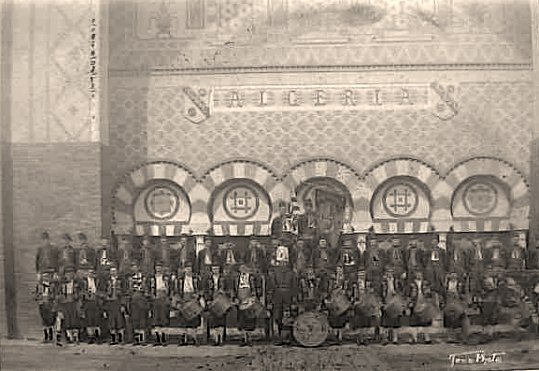

Souvenir
folder featuring the Algeria Shrine Temple, 1920s
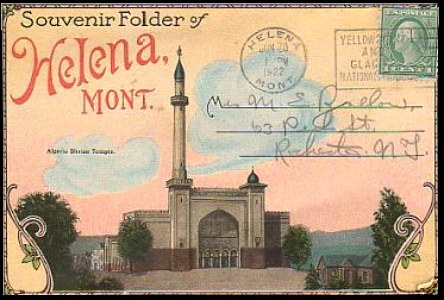

1935
Earthquake Damage

|
|

|
Both
photos show damage on the west side, along Park Ave.
There was similar damage on the east side, as well as
extensive cracking of interior plaster.
The
ballroom, on the north end of the building, apparently
was not extensively damaged; public events, including
fundraisers for building repair, were held there in
1936 and '37. Repairs on the Temple concluded in December
of 1937.
|
|
West
Side, Nov. 17 1935
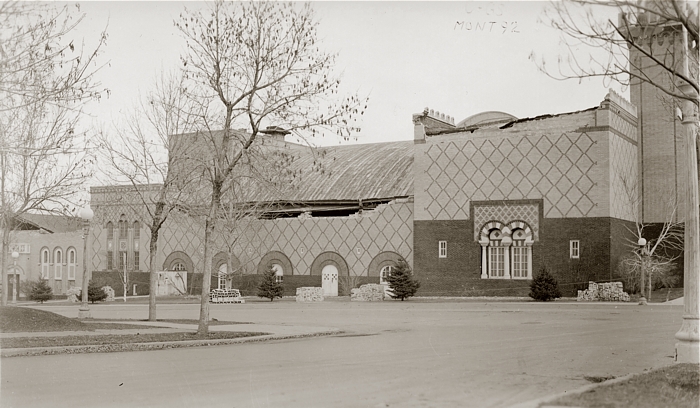
COURTESY
OF THE SEAN LOGAN COLLECTION • CLICK
ON IMAGE TO OPEN A BIG VERSION IN A NEW WINDOW
Looking
Northeast , Nov. 17 1935
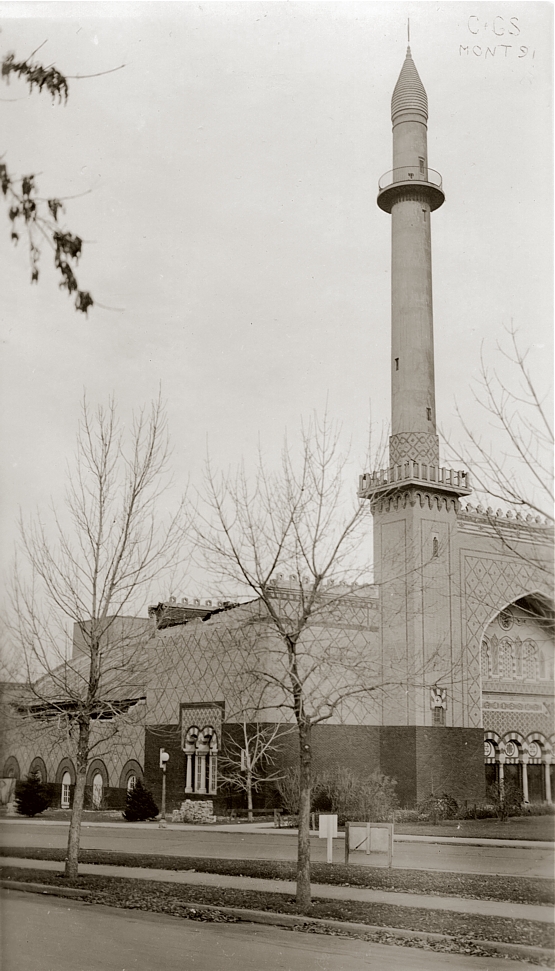
COURTESY
OF THE SEAN LOGAN COLLECTION • CLICK
ON IMAGE TO OPEN A BIG VERSION IN A NEW WINDOW
East
Side, Oct. 18 1935

COURTESY
OF THE ANN AND JOHN FAY COLLECTION, VIA KALLY PORRINI
East
Side, Nov. 10 1935

COURTESY
OF THE SEAN LOGAN COLLECTION • CLICK
ON IMAGE TO OPEN A BIG VERSION IN A NEW WINDOW
Undergoing
Repair
Four
Photos Courtesy of the Helena
Civic Center, via Kerry Brown
Special Thanks to Diane Stavnes
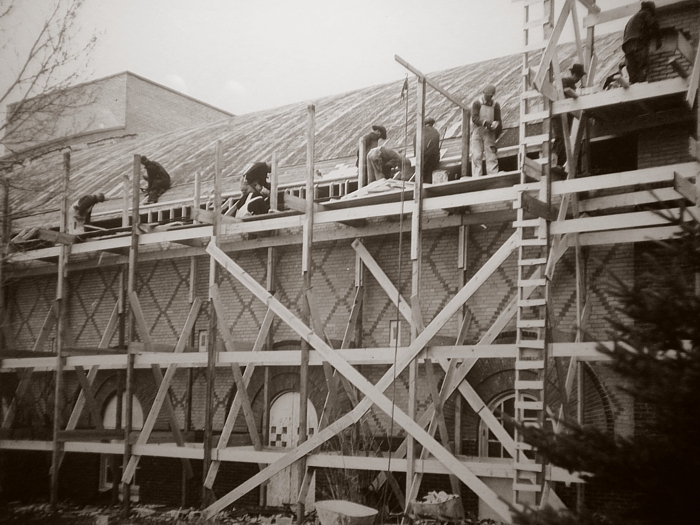
CLICK
ON IMAGE TO OPEN A BIG VERSION IN A NEW WINDOW
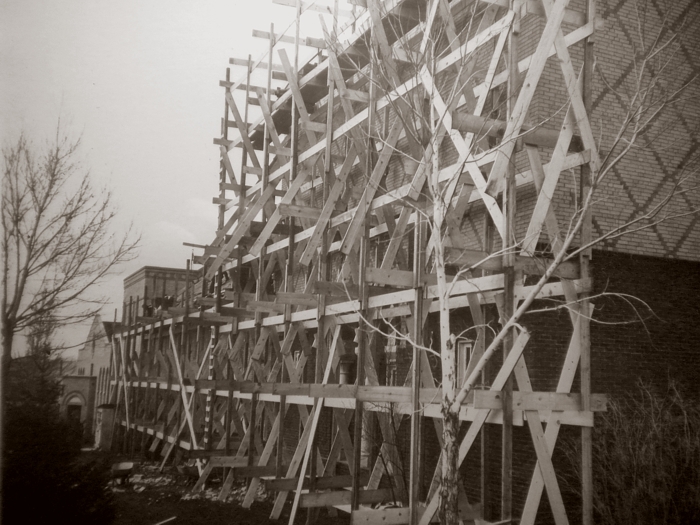
CLICK
ON IMAGE TO OPEN A BIG VERSION IN A NEW WINDOW

CLICK
ON IMAGE TO OPEN A BIG VERSION IN A NEW WINDOW
The
Wall Above the Auditorium Stage Required Additional Repair
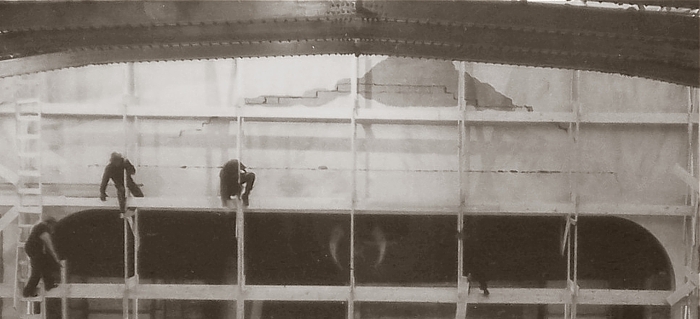


CLICK
ON IMAGE TO OPEN A BIG VERSION IN A NEW WINDOW

The
Original Dome
1921
- 1938
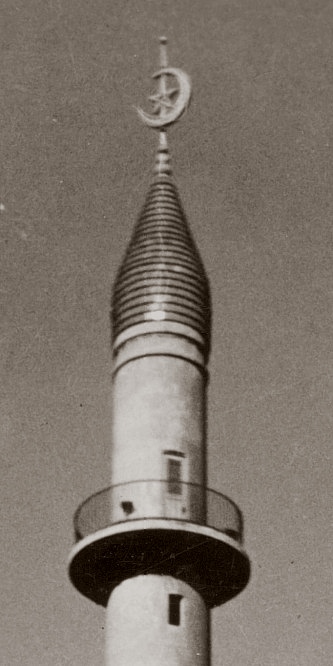
COLLECTION OF KENNON
BAIRD
| The
dome of the Algeria Shrine Temple minaret was originally covered
with blue terra cotta tiles, and topped by a metal crescent and
star motif. The City purchased the building following the 1935
earthquakes. |
Original
Blue Terra Cotta Tiles Can Still Be Seen
AT THE
BASE OF THE SMALL ONION DOME
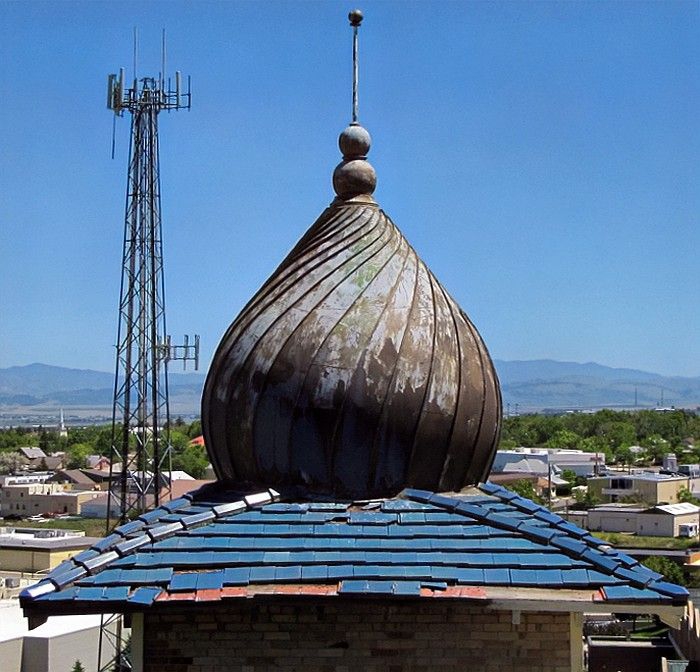
PHOTO
BY KENNON BAIRD
The tiles are
difficult to see from street level. Many layers of paint are visible
on the onion dome.
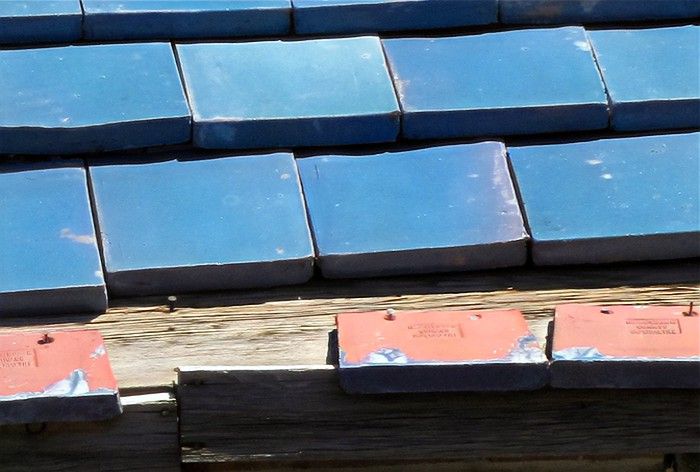
PHOTO
BY KENNON BAIRD
The
City of Helena Removed the Blue Tile Dome in 1938
Replaced with sheet copper dome in 1939 following protests

COURTESY
OF CAPT. SEAN LOGAN & THE HELENA FIRE DEPT.
FOR MORE HISTORIC HFD PHOTOS, CLICK
HERE!

COLLECTION
OF TED KIRKMEYER, COURTESY OF TOM
MULVANEY
| Promotional
float for the Marlow Theatre, parked on Fuller Avenue, 1939. In
the background is the domeless Civic Center minaret. |
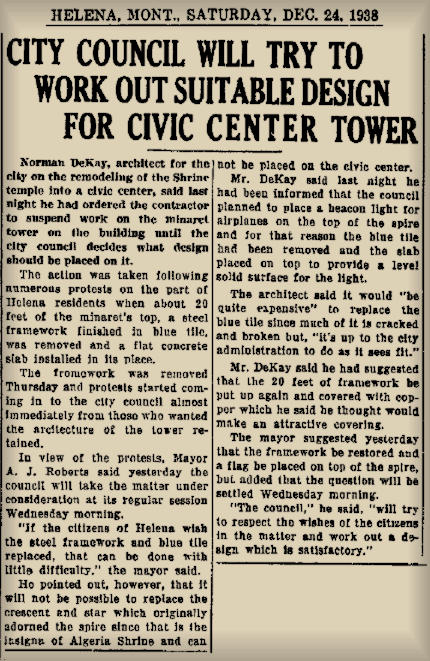

|
In
July of 1977, Entrepreneur Clem Meyer of Helena recalled to
an Independent Record reporter what covering the restored dome
with copper was like...
"It's
208 feet to the top," Meyer said. "I had to cut
the copper to fit like barrel staves, then carry it up the
stairs to the balcony." From there he climbed scaffolding
to the peak. "I used to be able to walk a 2 X 4 joist,"he
said. "Now I can't walk on a plank.
"DON'T GET OLD," he ordered with a rueful smile. |
|

A
Pleasant 1940s Postcard
View
Civic
Center from Women's Park, 1940s
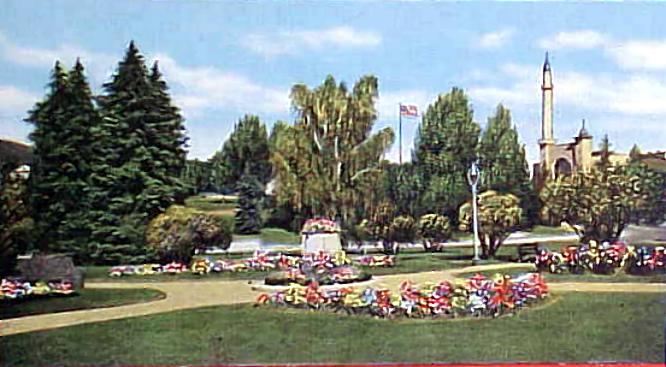
|
This from
the National Park Service's Women's
Progress Commemorative Commission Women's History Site Database
(pdf file):
Prior to
1905, the area that later became Women's Park was a spot were
women often stopped to rest on their way back to their west
side homes after shopping downtown. Rose bushes were informally
planted and benches placed in what became known as the
Women's Resting Place. In 1913, James and Mary Hill donated
the land to the City of Helena for the park. The property was
split in two with the construction of Fuller Avenue in 1918,
and the parks became known as Hill Park and Women's Park. The
Women's Park Association was formed during this period. They
held a benefit ball to raise funds to beautify the parks in
1916, and over the years dedicated additional benches and other
improvements.
|

Postcard
view from Hill Park, 1940s
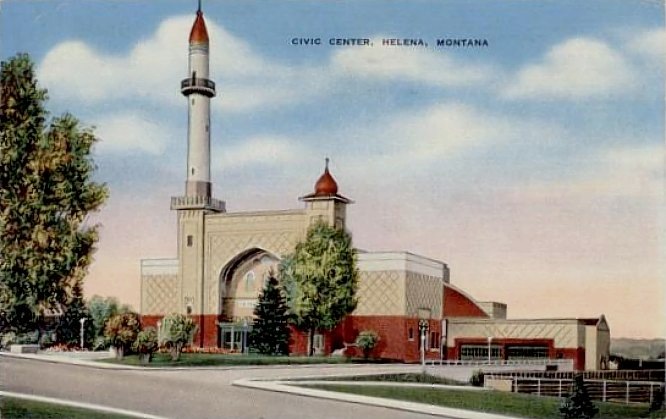

A late
1940's postcard view
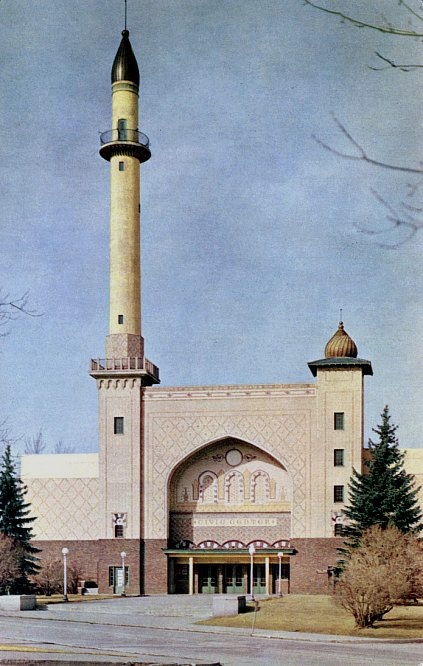
COLLECTION
OF KENNON BAIRD

Civic
Center façade
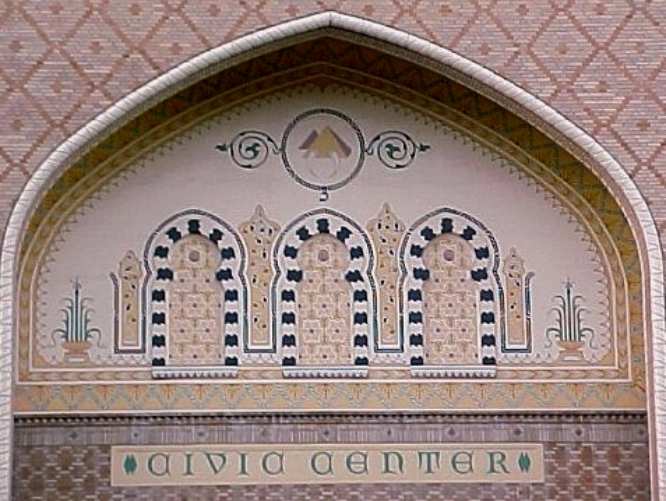

A late-afternoon
view, before 1951
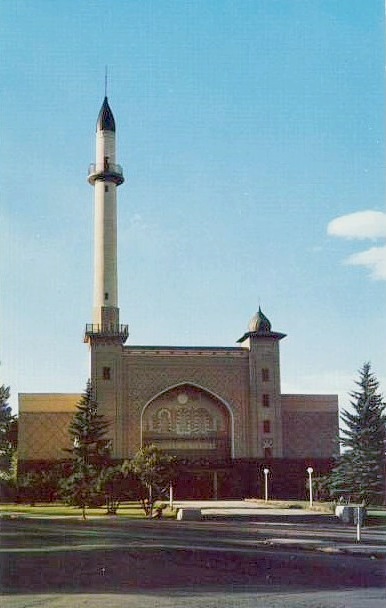
| We can date
this photo because we don't see the old silver bell which once
hung in the fire tower on display in front of the Civic Center.
It was placed there in 1951 (see it in the following photo). |

Civic
Center from Hill Park, ca.1954
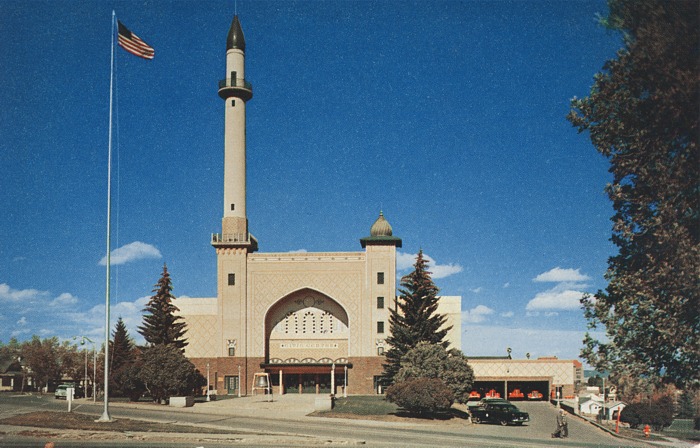
COLLECTION
OF KENNON BAIRD
Fire trucks at
the ready!
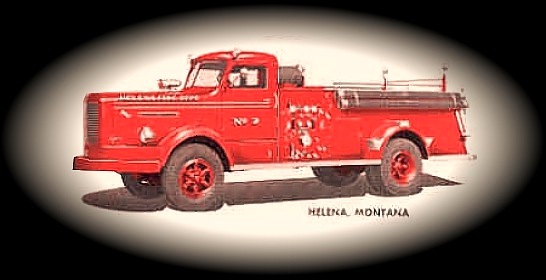
| 1954 Helena
fire truck, purchased from The Four Wheel Drive Auto Company of
Clintonville, Wisconsin. |

Park
Ave. and the Civic Center, 1957
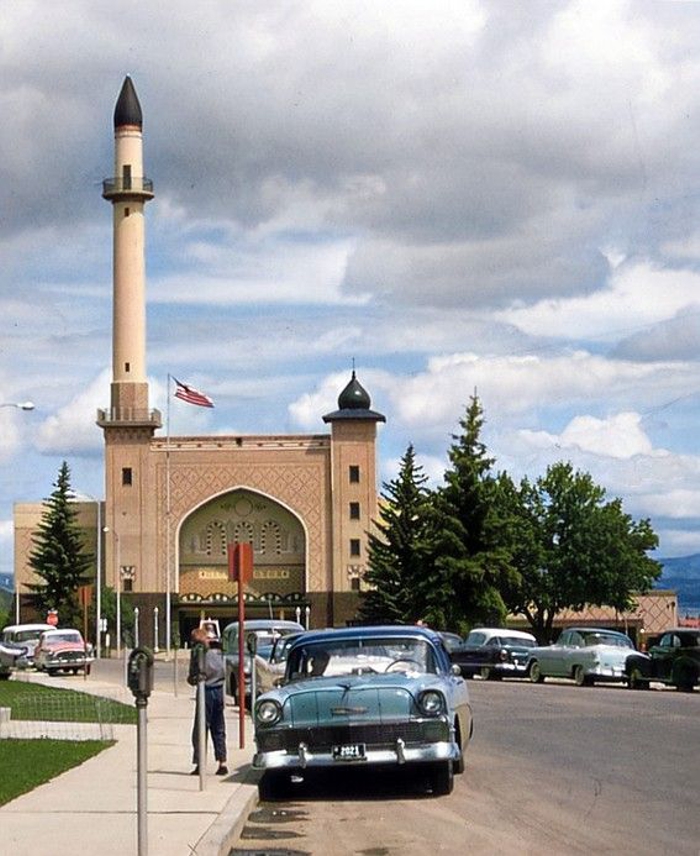
COLLECTION
OF KENNON BAIRD

Inside
the Minaret, June 24 2009
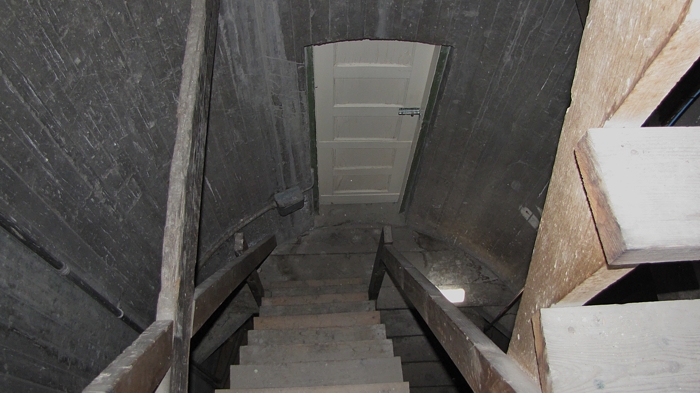
PHOTO
BY KENNON BAIRD
|
The high
circular observation platform of the Civic Center minaret, just
below the dome, is reached by climbing wooden steps located
inside the structure. The steps are hung from horizontal timbers.
Pictured
above is the door leading out to the large square observation
platform at the base of the cylindrical minaret.
|

PHOTO
BY KENNON BAIRD
A view of the
steps, about halfway up the minaret.
Downtown
from the Minaret, June 24 2009

PHOTO
BY KENNON BAIRD •
CLICK ON IMAGE FOR A BIG VIEW IN A NEW WINDOW

Inside
the East Tower, 2012
| As part of
the conversion of the Algeria Shrine Temple into City Hall after
the 1935 earthquakes, the fenestration on the south side of the
building was changed, primarily to create a Helena Fire Department
training facility. The east tower was substantially augmented,
with a narrow Moorish window being bricked up and three large
rectangular window openings added... |
Bricked-up
Moorish Window Seen from Inside the East Tower

COURTESY
OF SEAN LOGAN
|
The new
windows, installed in the late 1930s, are removable from the
inside, allowing firemen to practice rappelling down the façade
of the building. The placement of the new windows mimics an
earlier wooden training wall which stood near the old fire house
on South Main.
The composite
image below shows the Algeria Shrine before the post-earthquake
remodeling, the old training wall, and the new removable Civic
Center windows in 1939.
|

COURTESY OF SEAN LOGAN •
CLICK ON IMAGE FOR A BIG VERSION IN A NEW WINDOW
Views of the Windows and Interior of the East Tower,
November 2012
Photos
Courtesy of Sean Logan

| The removable
windows are accessed by an interior wooden ladder and platform
system. |
Metal
Rappelling Rope Anchors Embedded in Concrete Below the East Tower
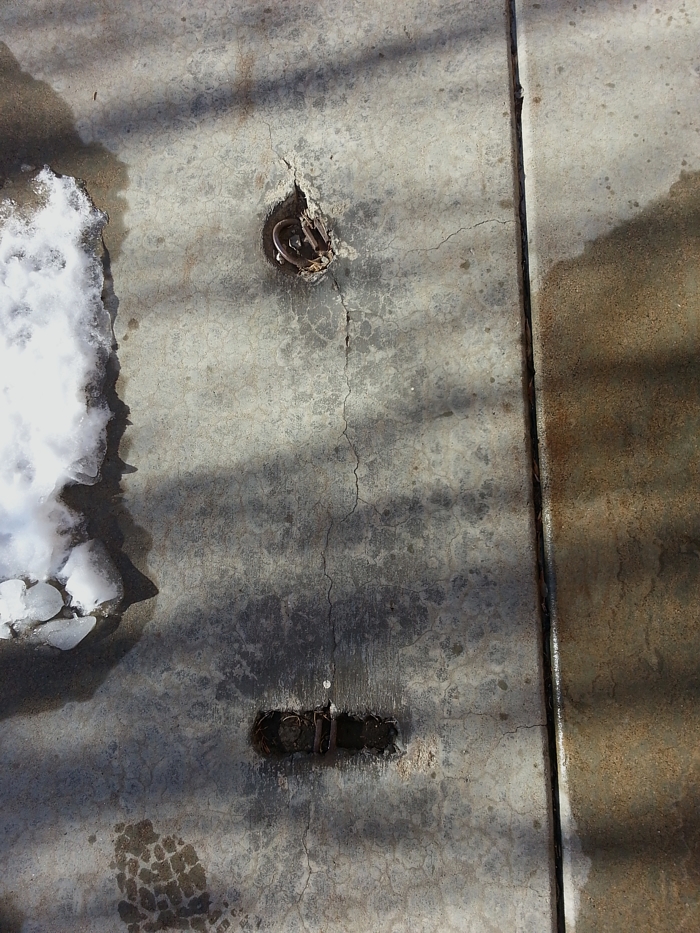
Ladders,
Platforms and Bracing Inside the Tower
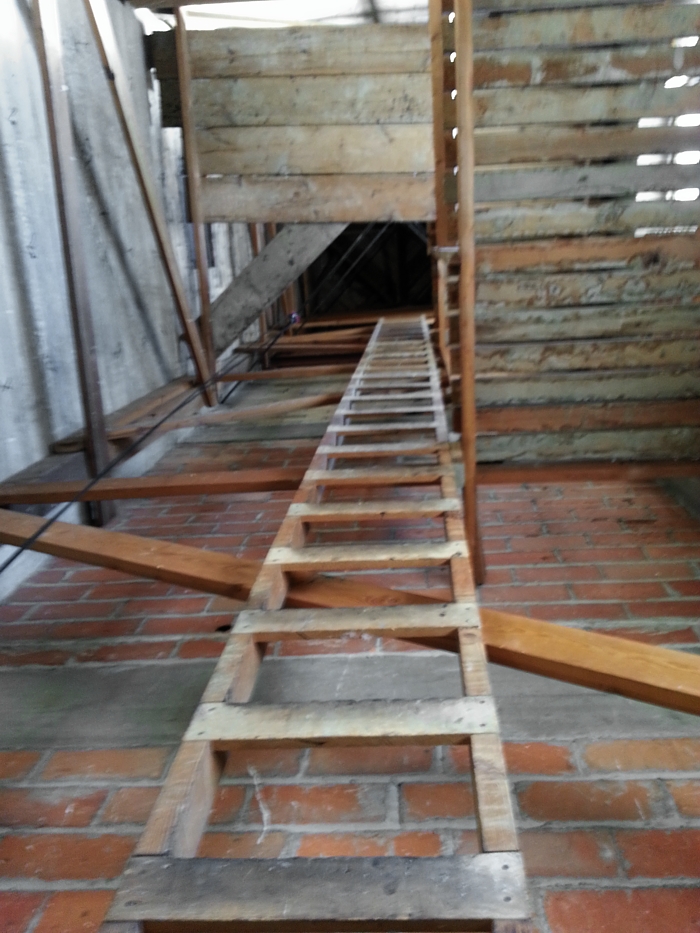

Platform
and Window

Removable
Window
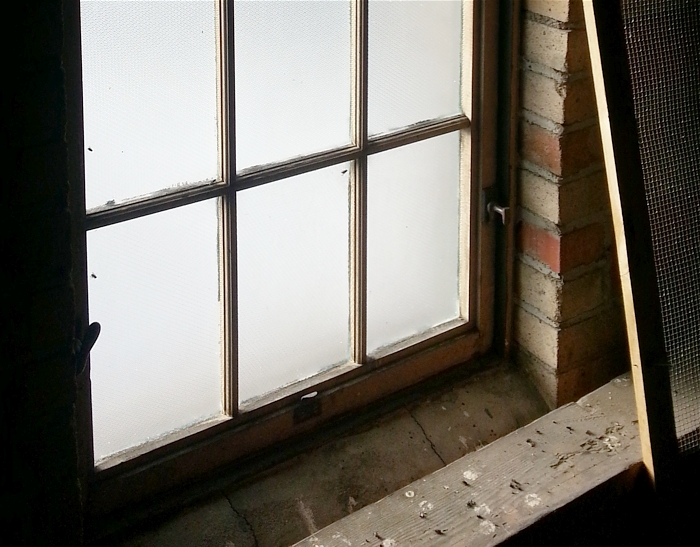
Turnbuckle Cross Bracing Inside the East Tower
The Base of the Onion Dome
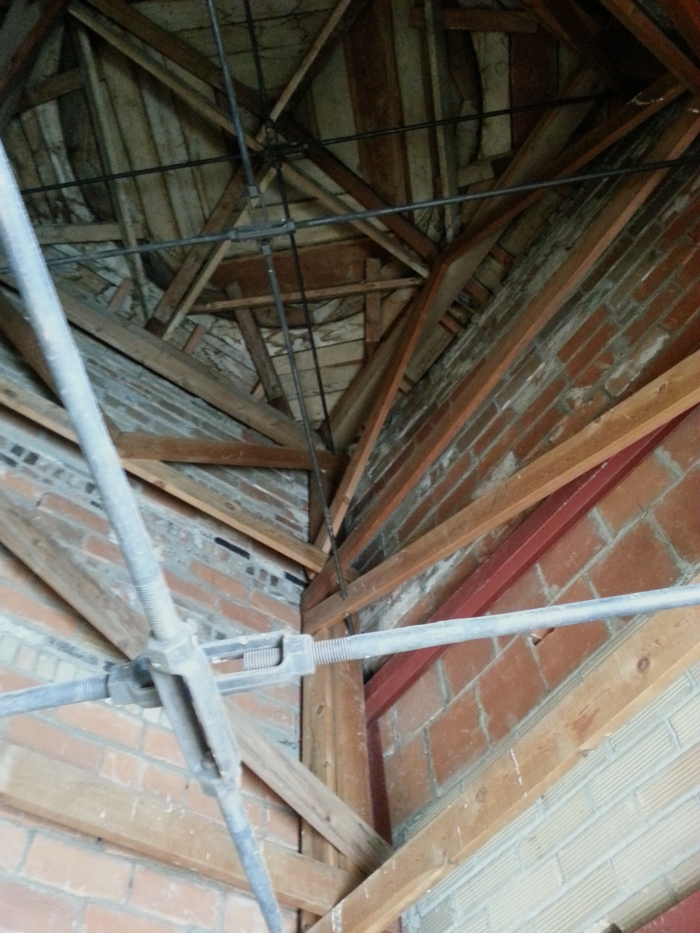
Firemen
Injured

This 1974 incident
apparently ended Civic Center window training.

Model
of the Algeria Shrine

COLLECTION
OF THE ALGERIA SHRINE, THANKS TO SHAWN RATCHFORD
CLICK ON IMAGE TO OPEN A BIG VERSION IN A NEW
WINDOW
| This striking
model was built by Shriners Jack J. Haytin (1890-1972) and William
Kiefner (1890-1963). The date of the model is unknown, but possibly
1940s. |

The
Civic Center Auditorium and Ballroom
Photos by Kathryn
Fehlig ~ September 2009

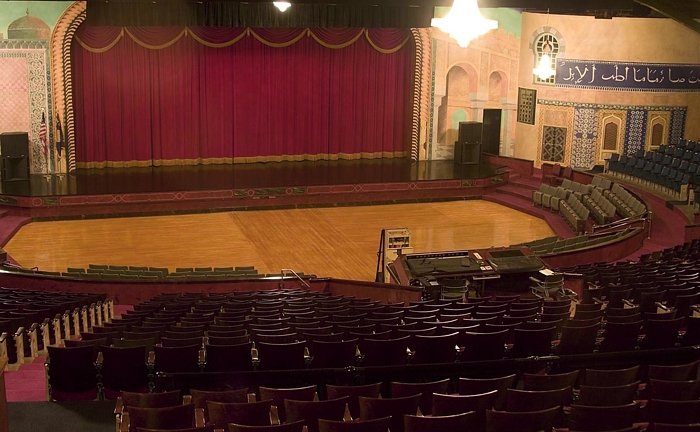

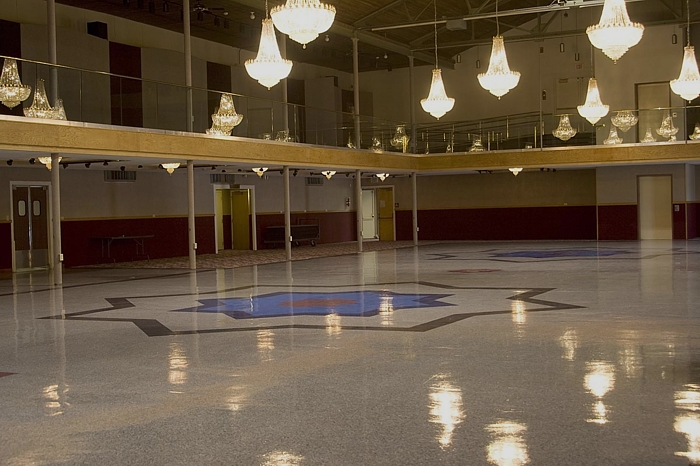
Thanks,
Kathy, for the handsome photos!

Fireman's
Ball, Civic Center Ballroom, March 17 1936

THE
JEZICK FAMILY COLLECTION, COURTESY OF CHUCK JEZICK •
CLICK ON IMAGE FOR A BIG VERSION IN A NEW WINDOW
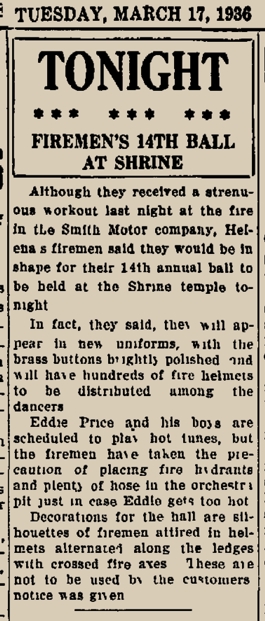

Helena
High Junior Prom, Civic Center Ballroom, 1938
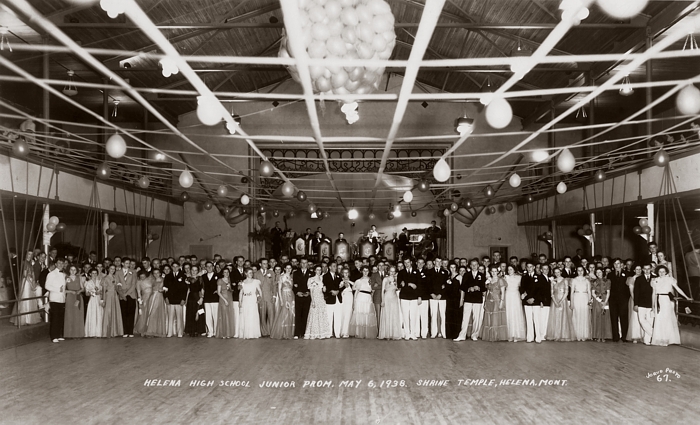
COURTESY
OF WENDI KOTTAS PETERSON •
CLICK ON IMAGE FOR A BIG VERSION IN A NEW WINDOW

Teen
Dance in the Civic Center Ballroom, 1968
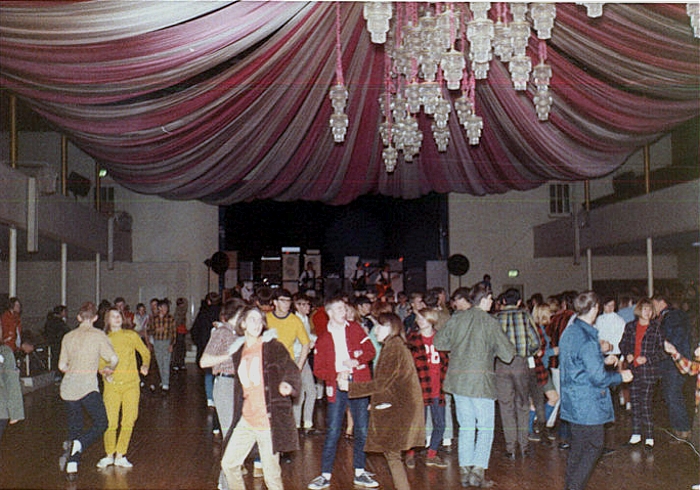
COURTESY
OF ROBERT NOEL CLARKSON
Helena Symphony Performs Handel's Messiah
Civic Center Auditorium, Dec. 17 1955
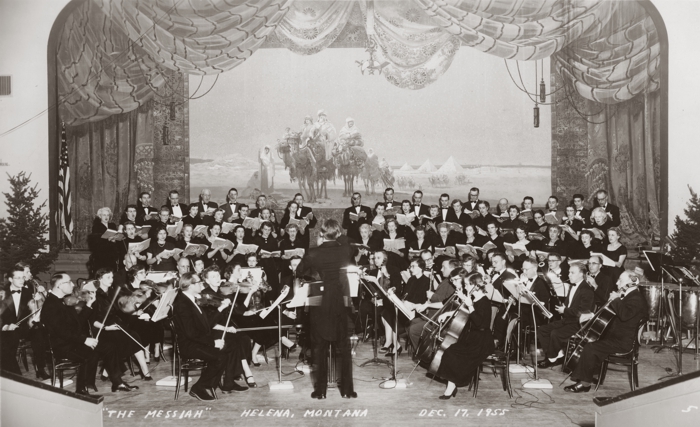
JORUD PHOTO FROM THE BAIRD COLLECTION
CLICK ON IMAGE TO ENLARGE IN A NEW WINDOW


Hill
Park and Women's Park
Mine
Tailings on the Future Site of Women's Park, 1897
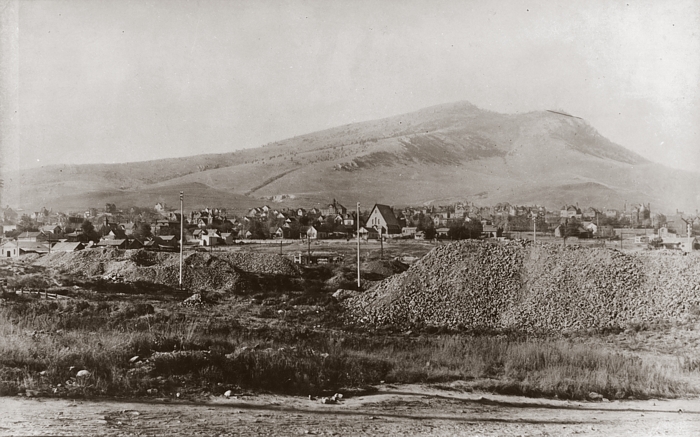
COURTESY
OF THE DAVID POOR COLLECTION • CLICK ON
IMAGE TO OPEN A BIG VERSION IN A NEW WINDOW
James
J. Hill
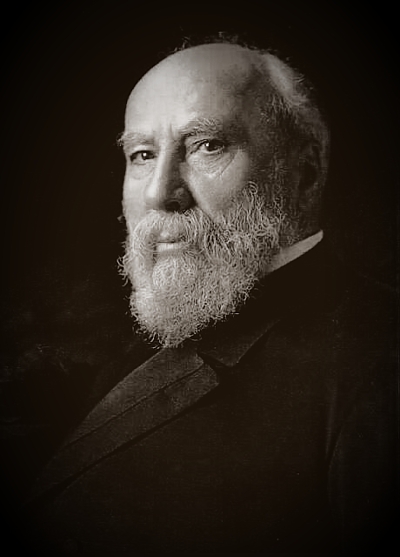
|
Land for
Hill Park was donated to the City of Helena by James
J. Hill, builder of the Great Northern Railway. In 1914,
the eastern half of the park land was upgraded by the Women's
Park Association...
"The
Women's Park Association was organized in April, 1914. Through
the efforts of the
organization the women's section Hill Park was created, making
one of the unsightly sections of the capital city a beauty spot,
including a grass lawn, broad walks, beds of beautiful flowers,
trees and shrubbery, stone benches, drinking fountains bird
fountains and other artistic garden
furnishings. The women's work continued on for some years and
gave proof of local patriotism and pride in the capital city
of the state. And it is a contribution to Helena which will
be more and more appreciated. The women of the associaion do
not claim all the credit. The men of Helena contributed generousy,
as well as the city officers, ever ready to assist whenever
called upon or help."
Helena
Daily Independent, Sept.1 1929
|
Looking
West Across Hill Park from Neill Ave., ca. 1918

KENNON BAIRD COLLECTION • CLICK ON IMAGE TO OPEN
A BIG VIEW IN A NEW WINDOW
Looking
East Across Hill Park, ca. 1920
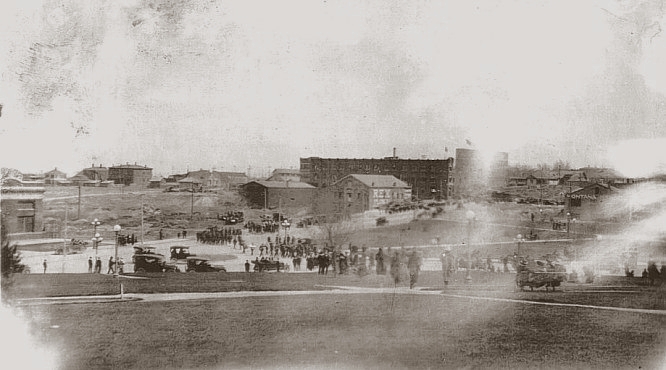
THE WES AND CAROL SYNNESS COLLECTION
A parade is making
the turn at Neill Ave. and Fuller. Prominent in the background is
the Steamboat Block.

Hill
Park from Women's Park, 1920s

COURTESY
OF SEAN LOGAN • CLICK ON IMAGE TO OPEN
A BIG VIEW IN A NEW WINDOW

The
1916 Confederate Memorial Fountain

| The Algeria
Shrine Temple seen from Hill Park, ca. 1930. In the foreground
is the Confederate Fountain, donated in 1916 by the Daughters
of The Confederacy. Until 1926, it was the northernmost Confederate
memorial in the U. S., (a memorial in Seatlle's Lake Vew Cemetery
now has that distinction). The fountain has undergone several
repairs and restorations over the years. |
Fountain
Dedication, Helena Daily Independent, Sept. 6, 1916
|
Handsome Fountain
Given To Helena With Fitting Ceremony
Confederate Daughters
Present Memorial Structure.
Large Crowd Hears Talks.
$2,000 Memorial Placed at Highest Point in Hill Park to
Beautify Rest Spot
Miss Young MakesSpeech of Presentation.
With fitting ceremony, the beautiful fountain recently placed
in Hill park was presented
to the city of Helena last evening by the Daughters of the
Confederacy in Montana. City Attorney Edward Horsky, acting
for Mayor R. R. Purcell, who was unavoidably absent, accepted
the gift after an address of presentation by Miss Georgia
C. Young. The emblem is a splendid contribution to the beautification
of the park
given to the city some years ago by the later James J. Hill.
A gathering of a couple of hundred Helenaites joined about
the new structure to listen to the evening’s program.
Several Confederate veterans were present in places of honor.
A short program, with a few necessary formalities, was applauded
by the patriotic crowd. When the impressive monument was
unveiled a long demonstration followed, giving the fountain
a most hearty welcome as one more means of beautifying the
city park.
The Evening’s Program. Judge R. Lee Word presided over
the program. Prior to the unveiling ceremony the Helena
drum corps gave several selection. Mrs. Will Aiken pulled
the cord which released the flag covering the new fountain.
The water was turned into the huge bowl by Mrs. F. F. Read.
These women with Miss Young, who followed with the presentation
speech, are the only charter members now in the city.
Miss Young, in formally presenting the splendid memorial
to the city, told of the history of the gift; how the Confederate
Daughters seeing the need of more means of beautifying Hill
park, set about on a campaign to secure funds for the work.
She explained the motives of the order in planning such
a gift, telling how the Confederate Daughters, desirous
of making some presentation to their new residence after
leaving the south, had decided upon the fountain as a fitting
memorial.
Formally Presented. The speaker lauded the present-day American
spirit, a spirit of union with no feeling between the old
north and south, which caused such bitterness and sorrow
years ago. Both sides are now engaged in building up a better
c ountry to live in, making their homes more comfortable,
their cities more beautiful. She
closed:
“On
behalf of the daughters of the Confederacy, I present this
fountain to the city of Helena
as a token of our esteem toward our new home.”
“The
city of Helena is pleased and honored to accept this substantial
and beautiful donation from the Daughters of the Confederacy.
On behalf of the city I accept most heartily this splendid
token” Thus spoke Attorney Edward Horsky, in place
of Mayor Purcell.
The city attorney, in accepting the gift, delved into the
history of the city and the park, on which the monument
was built. He lauded the spirit of the Confederate Daughters
in making such a fitting gift. “The efforts of the
Daughters of the Confederacy in planning such a gift are
worthy of the highest praise,” said Mr. Horsky. “We
have several pretty parks, though they lack such fitting
and substantial markings as this, it is a beautiful memorial
that will long keep bright the memory of the organization
that donated it.”
Of Native Granite. The fountain is carved from native Montana
granite. It towers eight feet high and in the top a large
electric globe is placed. Four streams of water pour forth
into a large bowl which overflows into a basin six feet
square. The structure is ornamented with pretty carvings.
It was designed by Architect George H. Carsley and erected
at a cost of $2,000. It was placed on the highest point
in Hill park.
|
|
From
Confederate Veteran Magazine
January 1, 1917
via Ken Robison
CONFEDERATE MEMORIAL IN HELENA, MONT.
The
5th of September, 1916, was made memorable in the
city of Helena, Mont., by the presentation of the Confed-
erate memorial fountain as a gift from the Winnie Davis
Chapter, U. D. C. It was in 1903 that this Chapter began
its work for a Confederate memorial, and in this it was
aided by other Chapters of the State. So on the evening
of September s, in the glow of the long Montana twilight,
an interested throng gathered to witness the unveiling ceremonies.
Judge
R. Lee Word, of the district court, acted as master
of ceremonies. The speech of presentation was made by
Miss Georgia C. Young, the veil was drawn by Mrs. Will
Aiken, and the water was turned into the fountain by Mrs.
F. S. Read, these ladies being the only charter members
of
Winnie Davis Chapter now residing in Helena. On behalf of
the city the fountain was accepted by City Attorney Edward
Horsky, who expressed the appreciation of the municipality
for this splendid gift.
This
beautiful memorial, which cost approximately two thousand
dollars, stands in Great Northern Park, near the heart of
the capital city, on the western rim of historic old Last
Chance Gulch and near the Great Northern passenger station.
The site is such that it is accessible, and the fountain
fits into the landscape most charmingly.
The
base upon which the fountain is placed is rectangular
in form, bordered by heavy granite copings and approaches
being on opposite sides, corresponding to the east-and-west
axis of the park. These will be bordered by flower beds,
and trees and shrubs will be placed about the fountain.
On
the other sides are granite seats with supports having
classic lines. There are two basins. Bubbling drinking foun-
tains at its north and south sides are so designed as to
en-
hance the beauty of the lines of the fountain. The upper
basin is about six feet in diameter, supported on an octagonal
pedestal springing from the lower basin. This pedestal is
orna mented by conventional water plant leaves.
Rising
out of the upper basin is an octagonal shaft, upon
opposite sides of which are two inscriptions in cut letters,
also with panels and ornament of carved leafage. Upon one
side is this inscription : "A Loving Tribute to Our
Confederate Soldiers." Upon the other are chiseled
these words :
"By
the Daughters of the Confederacy in Montana, A.D.
1916."
Four
bronze spouts spill water from this pedestal into the
upper basin. In addition, there are four low jets bubbling
through the surface of water in the upper basin, which,
to-
gether with two overflow spouts from the drinking fountain
and the water spilling from the upper into the lower basin,
form pleasing lines and graceful patterns.
THE
MEMORIAL FOUNTAIN.
The
whole is surmounted by a bronze lantern, giving to the shaft
something of the proportions of a lighthouse, the distance
from platform to top of light being about nine feet. The
designer, Mr. George H. Carsley, the well-known architect
of Helena, was inspired somewhat by the memorial fountain
erected in Washington City to the memory of Francis Davis
Millett and Col. Archibald Willingham Butt, two heroes who
lost their lives in the sinking of the Titanic.
Except
for the bronze spouts and the floor of the platform,
the material used in the fountain is native Montana granite.
|
Girls
posing at the Confederate Fountain, ca 1917
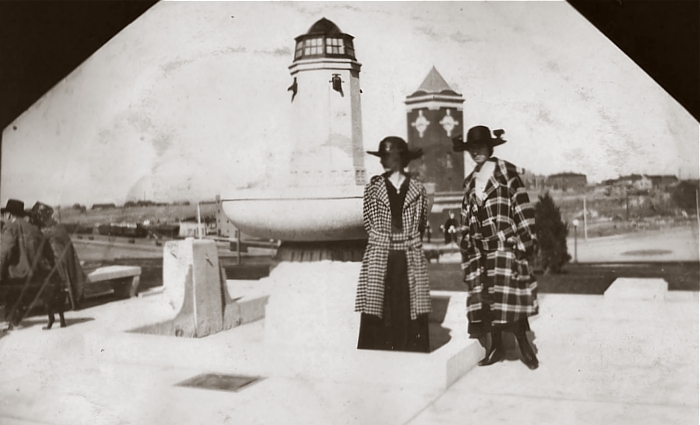
Girls posing, 1940s
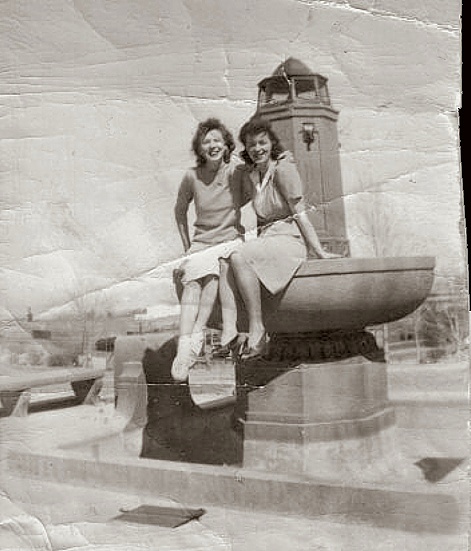
Mary Evelyn
Synness (on the left) and an unknown companion.
Girls
Climbing, 1946

The
Fountain in 1955
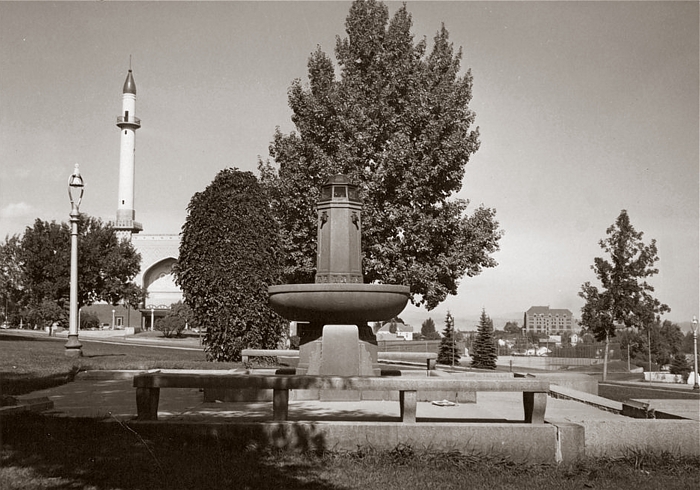
Confederate
Fountain Restored with Model City Funds, 1971


The Fountain in 2012
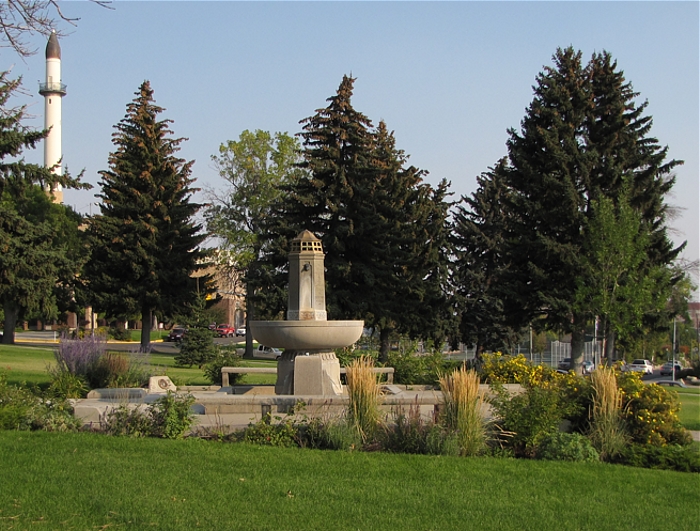
2015
Renaming / Rededication Controversy
|
On
June 17, 2015, a young, mentally deranged White racist shot
and killed nine African Americans as they worshipped in their
Charleston, South Carolina church. The shooter, apprehended
by law enforcement the day after the attack, had previously
posted online photographs of himself holding up a Confederate
battle flag. In response to the shooting, efforts were made
across the United States to remove or modify symbols, memorials
and monuments related to the Confederacy.
Various
motivations were behind the efforts to expunge or alter historical
references to the Confederacy, ranging from overwrought emotions,
appeals to politcal correctness, and blatant political opportunism.
In Helena, City Commissioners Katharine Haque-Hausrath and
Andres Halladay proposed "rededicating" the fountain.
Haque-Hausrath wrote, "...we do not believe an explicitly
Confederate memorial and its attendant support for slavery
and more recent symbol for white supremacy and exclusion of
minorities, is appropriate for our city."
The
reaction from Helena's history community was strong but measured.
Via articles in the Independent Record newspaper and postings
on social media, the case was made that the fountain should
remain unchanged, and that signage explaining its historic
significance should be added. It was pointed out that the
fountain is not a tribute to the Confederacy as such, but
rather a memorial to men who fought and died. The inscription
on the fountain reads, "A
Loving Tribute to Our Confederate Soldiers."
On
July 8, 2015, the Helena City Commission discussed the proposal,
and also took public comments. On July 14, 2015, word was
received that City Commissioners Haque-Hausrath and Halladay
were no longer advocating renaming the fountain. As of this
writing (July 19, 2015), the only change will be the addition
of interpretive signage near the fountain.
|

The
Rustic Bandstand
1922 - circa 1950
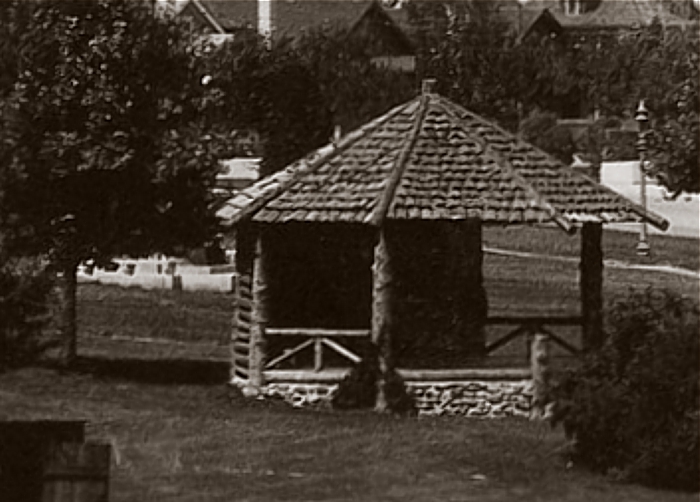
COURTESY
OF TOM MULVANEY
|
Constructed
in the autumn of 1922, this rustic-style bandstand could accomodate
40 musicians. It was located just southeast of the Confederate
Fountain, part of which can be seen behind the tree on the
left side of the photo.
According
to newspaper articles, the design and placement of the bandstand
left much to be desired. Audiences were downhill from the
bandstand, which would have made sitting down for concerts
quite uncomfortable. The roof projected sound straight down,
so performances were difficult for audiences to hear.
The bandstand
was in use until at least 1945, when it was reported as being
in disrepair. The completion of the bandshell in Memorial
Park in 1949 made the old bandstand totally obsolete. It was
likely demolished around that time.
|
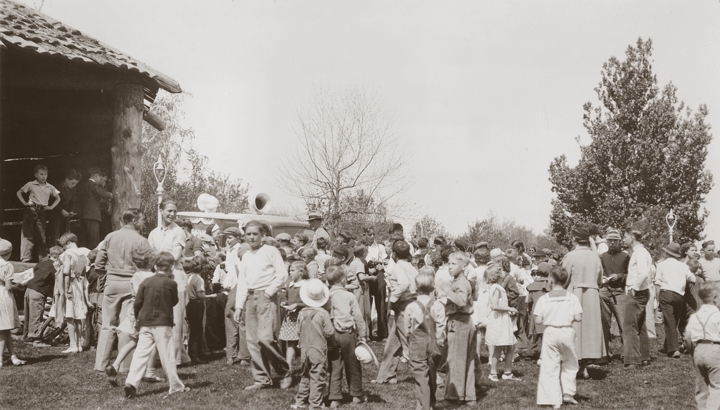
COLLECTION
OF TED KIRKMEYER, COURTESY OF TOM
MULVANEY •
CLICK ON IMAGE FOR A BIG VERSION IN A NEW WINDOW
| The east
side of the bandstand, May 22 1937. The event was a picnic in
Hill Park, sponsored by the Rio Theatre. |

Hill
Park from Women's Park, 1941

COLLECTION
OF KENNON BAIRD

Looking Northeast from Women's Park, circa 1928
Note Pergola in the Right Background
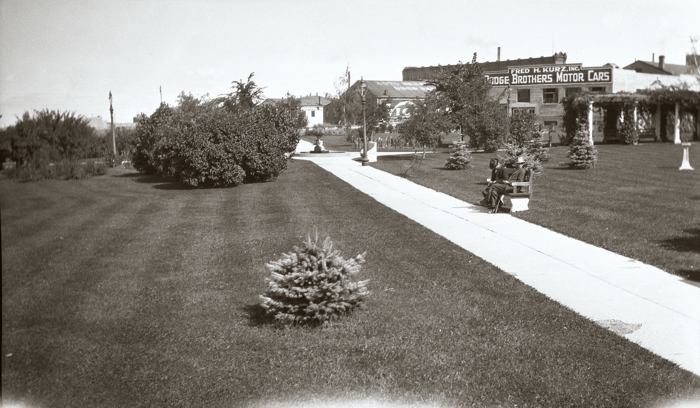
KENNON BAIRD COLLECTION
CLICK ON IMAGE TO OPEN A BIG VERSION IN A NEW WINDOW
Unidentified Woman and Pergola, 1920s
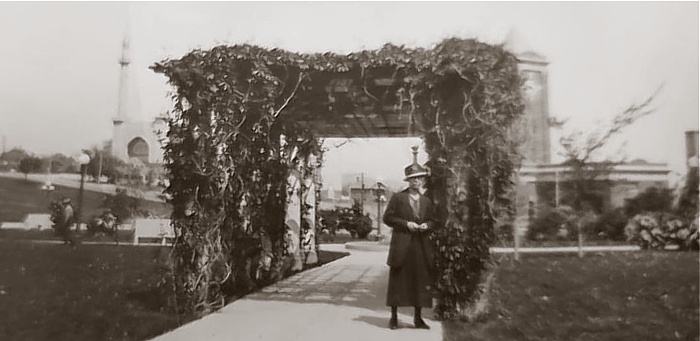
COURTESY OF JANET STELLMON
Unidentified Young Woman and Pergola, ca. 1917
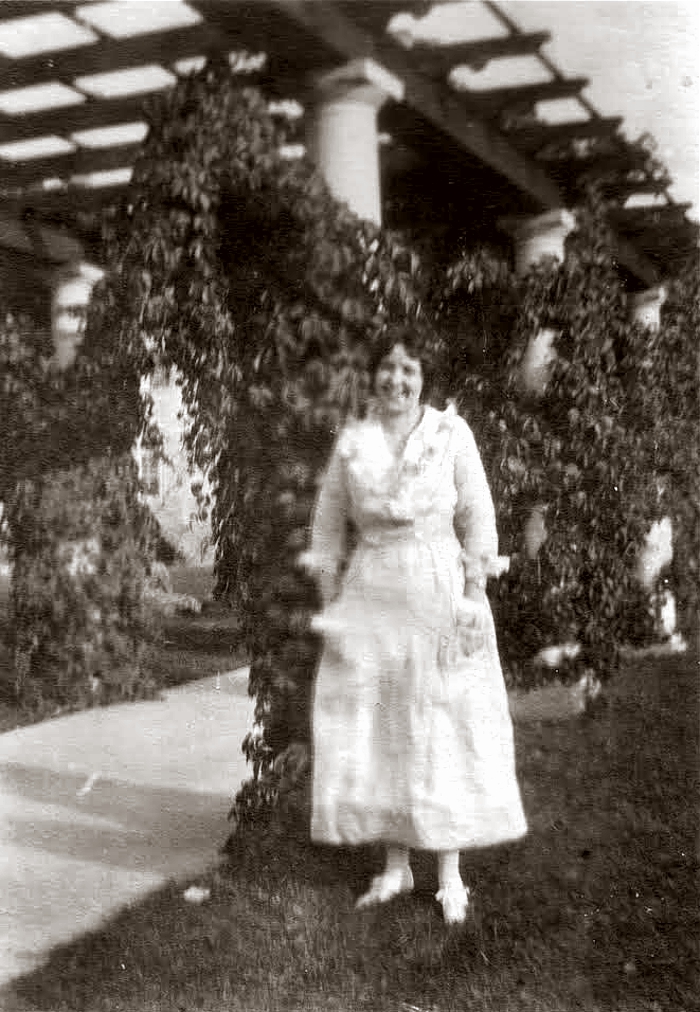
COURTESY OF ANDY LOPEZ
| Installed in 1916, the pergola was the gift of Mrs. Chas. C. Perry. It was designed and constructed by Hartman & Sanders, garden furnishers of Chicago. Local tradesmen did the installation. The date of its removal was not found. |
Pergola Site

Pergola, c.1927
 KENNON BAIRD COLLECTION KENNON BAIRD COLLECTION
CLICK ON IMAGE TO ENLARGE IN A NEW WINDOW
Looking Northeast from Women's Park, circa 1930

KENNON BAIRD COLLECTION
CLICK ON IMAGE TO OPEN A BIG VERSION IN A NEW WINDO
Helena
High School Band Members in Women's Park, 1957

COURTESY
OF RAY LINDSEY

The
"Last Chancer" Tour Train on Fuller Ave., ca. 1956
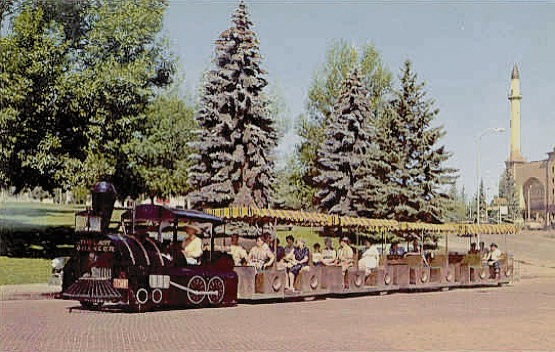
Note the brick paving.

The ubiquitous
Tour Train at Hill Park on Neill Ave., 1959
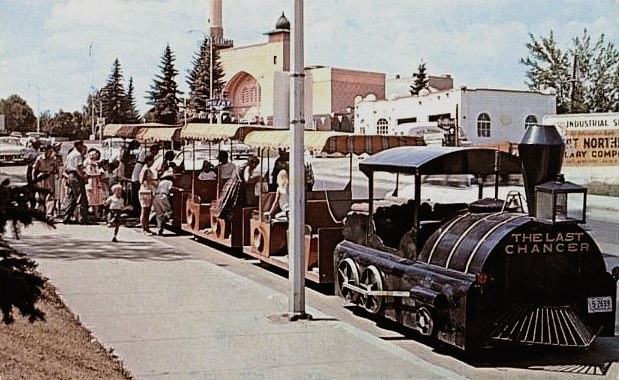

1970s
view of the Civic Center from Women's Park
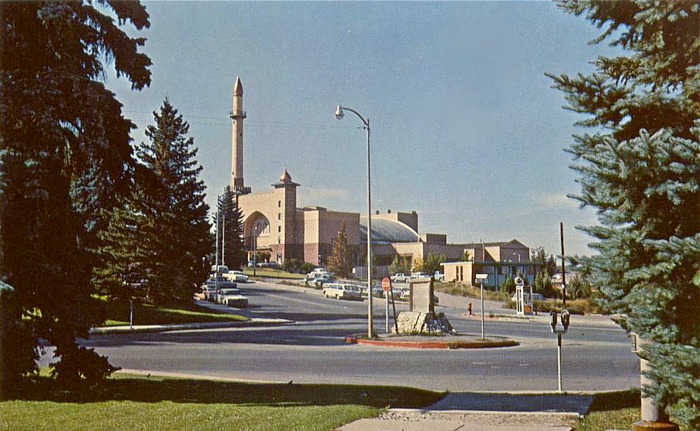
The
Denver Block Arch in Women's Park
|
Built in
1890-91, the Denver
Block (125 Broadway) was a mixed-use building with businesses
on the street level and flats above. It was damaged by the 1935
earthquakes, but repaired. The Denver Block was spared demolition
during the 1970s Urban Renewal program, but was destroyed by
fire on May 26, 1981.
Thanks to
Norman "Jeff" Holter, the granite arch was saved.
It was taken down and reassembled in Women's Park where it stands
today...
|
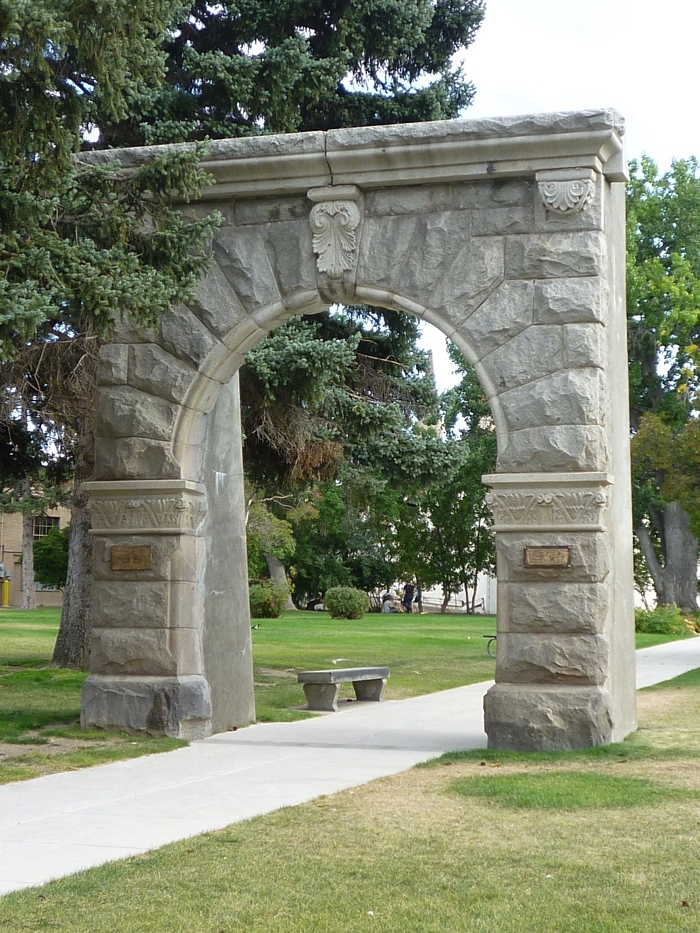
COURTESY
OF SEAN LOGAN • CLICK ON IMAGE FOR A BIG
VERSION IN A NEW WINDOW
Memorial
Plaques on the Arch

COURTESY
OF SEAN LOGAN

|



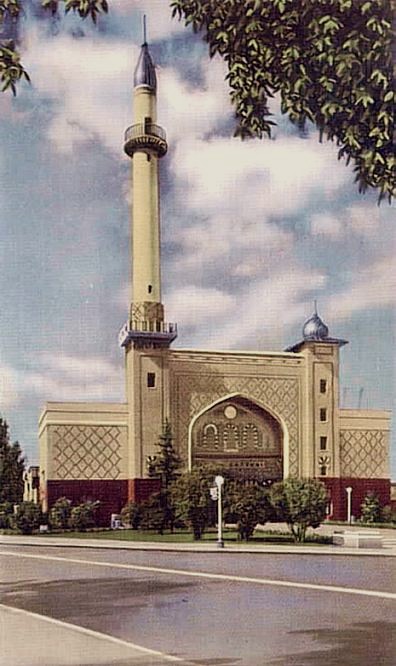













































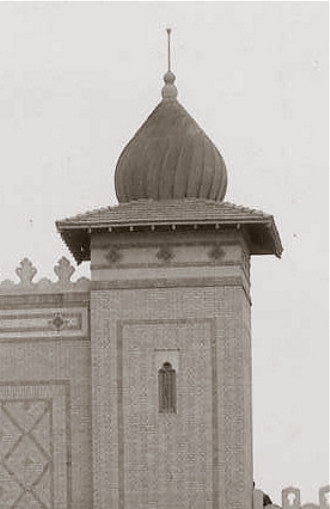
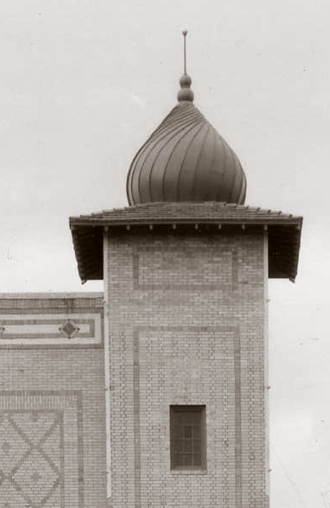











































 KENNON BAIRD COLLECTION
KENNON BAIRD COLLECTION





